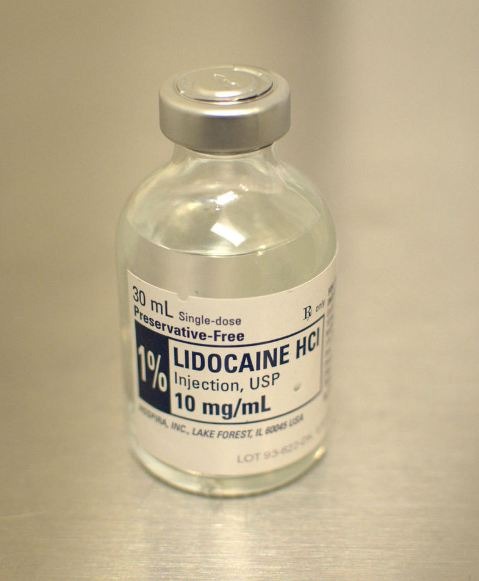If you ever had significant or even just a minor surgery, you might have come across a medication called lidocaine. Swedish chemists Nils Löfgren and Bengt Lundquist first synthesized the drug between 1943 and 1946. Since then, lidocaine has become one of the most common go-to drugs to deal with discomforts like physical pain. More importantly, the drug acts as a local anesthetic from simple to complex health procedures.
Lidocaine is a prevalent medication available in almost any pharmaceutical across the globe. The drug can take several forms, depending on the nature of the medical condition where it will be administered. It is relatively inexpensive and versatile, whose anesthetic properties are pretty essential in various medical circumstances.
HOW IT WORKS
Lidocaine Works as a Local Anestheti
Primarily, medical professionals administer lidocaine as a numbing agent. Lidocaine takes only several minutes to take effect and lasts about half to three hours. Due to its impressive efficacy and relatively long-lasting results, it lists as one of the essential medicines based on the World Health Organization (WHO).
Since it is conveniently inexpensive, safer, and versatile, most dentists prefer using the medication as local anesthetics. As a local anesthetic, lidocaine numbs the sensation of the tissues within the area of the body in question. The numbing property of the drug blocks the sodium channels so that the neurons of the tissues in the area are rendered incapable of sending sensation signals to the brain.
It becomes especially vital during medical surgeries since the patient will be relieved from any sensation of pain which the procedure might entail. For example, lidocaine is administered before endoscopies and intubation (such as tracheal intubation) to prohibit the patient’s gagging and coughing reflexes during the procedure. Dentists also use lidocaine to numb the patient’s mouth when extracting a tooth.
It Comes in Many Forms
Medical professionals administer lidocaine in various ways depending on the nature of the patient’s condition. Moreover, lidocaine takes different dosage forms for specific purposes, such as in several topical formulations frequently used for injection and infusion.
Transdermal patches containing doses of lidocaine are also available, directly applied on the skin’s surface. Lidocaine creams are also common, and several pharmaceutical companies offer the strongest lidocaine cream over the counter.
It Helps Deal with Specific Medical Issues
Aside from being a local anesthetic, lidocaine can also be used to treat specific medical issues. With its numbing abilities, lidocaine is also commonly recommended to patients suffering from premature ejaculation. The medication helps reduce the sensation in the area, thus, delaying ejaculation.
Heart arrhythmias are health conditions that can also be alleviated using lidocaine. Lidocaine is an essential class-1b antiarrhythmic drug that suppresses the abnormal rhythms of the heart. Hence, it is most frequently administered intravenously to patients with these conditions, particularly those associated with acute myocardial infarction.
It is Mixed with Other Drugs
Lidocaine can be used as a diluent to other drugs. For instance, lidocaine hydrochloride can act as a diluent to benzathine penicillin G. Benzathine penicillin G injection as maintenance therapy of rheumatic fever can be extremely painful. Using lidocaine hydrochloride as a diluent to the medication can help reduce the discomfort caused by injection significantly.
The anesthetic can also be used as an adjuvant to certain medications. Take curing renal colic, for example. It is a pain associated with urinary stones blocking the urinary tract, and it can be excruciating. A study shows that using lidocaine as an adjuvant to morphine in treating renal colic hastens the process of relief.
ADVERSE EFFECTS OF LIDOCAINE
Correctly administered, lidocaine can have infrequent and minimal side effects. However, since it is still a foreign substance entering the body, complications from administration techniques and allergic reactions can still happen, although pretty rarely. Since lidocaine primarily targets neurons and tissues, excessive exposure to the substance may lead to the central nervous system (CNS) and cardiovascular side effects.
CNS – agitation, anxiety, apprehension, confusion, disorientation, dizziness, hallucinations, hyperesthesia, hypoesthesia, psychosis, slurred speech, tremors, etc.
Cardiovascular – arrhythmias, bradycardia, cardiac arrest, edema, flushing, hypotension, venous insufficiency, increased defibrillator threshold, and the like
Additionally, symptoms of side effects can also manifest in the different areas of the body.
LIDOCAINE CONTRAINDICATIONS
Despite being a generally used and tolerated local anesthetic, lidocaine has absolute contraindications that need consideration to avoid severe adverse complications. If you have any of this, going for lidocaine might not be a great choice.
- Second or third-degree heart block
- Allergic reaction to amide local anesthetics
- Pre-existing treatment using class I antiarrhythmic agents such as quinidine, flecainide, and disopyramide
- Prior medication using amiodarone hydrochloride
- Heart block issues such as sinoatrial block, Adams-Stokes syndrome, and Wolff-Parkinson-White syndrome
Furthermore, if you have or are any of these below, it would be wise to ask medical advice from a health professional first as a cautionary measure.
- Hypotension that is not associated with arrhythmia
- Old age
- Bradycardia
- Impaired liver function
- Liver disorders such as porphyria
- Pseudocholinesterase deficiency (sensitivity to anesthetics)
